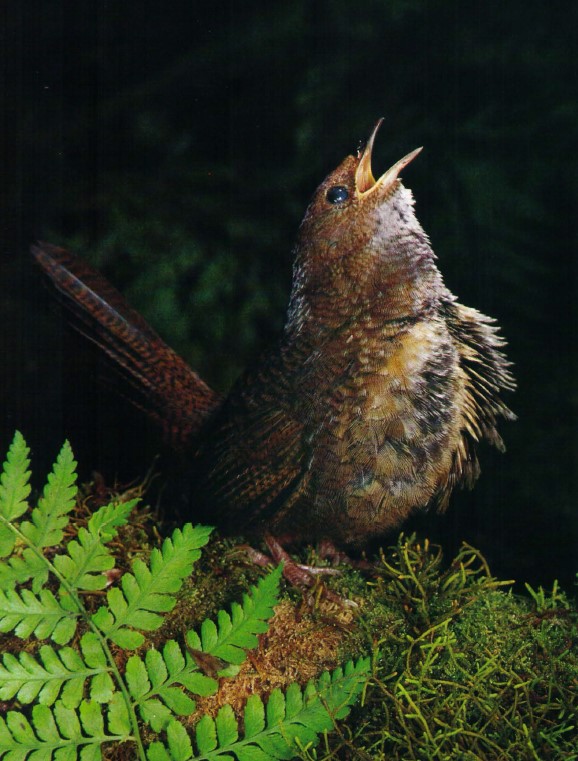The Rufous Scrubbird (Atrichornis rufescens) lives only in Australia, making it a very distinctive species of bird. Under the cover of dense vegetation, they spend their entire lives. Their territories are dotted with nooks, crannies, and corners where they creep, run, and hide without almost ever taking flight.
They have cartilaginous wishbones, which reflect their inability to fly. Combined with their reticulately scaled feet and the unusual syrinx or voice box that is controlled by only three intrinsic muscles, they seem related to lyrebirds. As with lyrebirds, males use loud, penetrating voices during breeding to protect their territories; they also mimic well.
In rainforests and very wet eucalypts along the mid-eastern coast, the Rufous Scrub-bird lives in pockets of dense undergrowth and shrubbery. At least one meter of cover is necessary, as is an ever-moist microclimate at ground level and an abundance of leaf litter. There they poke around, feeding on insects, worms, other invertebrates, and seeds, sometimes working under the litter for quite some distance.
It is common for males in prime habitat to occupy vast, dispersed territories of about 1 to 2 hectares, with an average density of 4 territories per square kilometer; often, they are out of sight of one another. Unlike the Noisy Scrubbird, males only sing much during breeding. As they move through their territories, they drop their wings, flare their breasts, and raise their tails. A female also occupies a territory of approximately the same size as a male, which only partly overlaps with the territory of the male.

The female is likely to build the nest, incubate, and rear the young alone, although their pair bond may often be closer than that of lyrebirds. As a result of clearing, Rufous Scrubbird populations are now largely restricted to fragmented pockets of suitable habitat in national parks and state forests, and there may be less than 1000 individuals left in the world. Despite producing more than a thousand young per year, the excess has no place to go because the habitat is the bottleneck. Forests may benefit from selective logging to increase undergrowth density.
Identification: The upper parts of the male bird are uniformly dark rufous-brown, finely barred black. The throat is white-grey. An extensive black pattern runs down both sides of the breast; the center of the lower breast and the belly are buff, deepening under the tail. The wings are short and rounded, and the tail is tapered and rounded. The eye is a deep brown. Bill is brown. There is a reddish brown color to the feet. In females, the pattern on the underparts is duller and huffier than in males. IMMATURES: Reddish, browner above. The DOWNY YOUNG has a densely tufted grey-white appearance.
As the Rufous scrubbird squeaks and makes feeble zit calls in alarm, both sexes will make sharp squeaks. Nevertheless, the Rufous scrubbird’s song is characterized by a high cheep, cheep, cheep by the male, falling and accelerating, while making mimicry; ringing notes, and churrs.
Below is a measurement of the size of the Rufous scrubbird.
Males are about 180 mm long, while females are about 165 mm long.
Nesting and breeding occur between September and December. A domed shape nest with a small side entrance is made up of interlaced rushes and grass with some leaves. There is a hard cardboard-like substance that is completely lined with a decayed rush and wood that serves as the nest chamber. Habitually nestled in thick shrubbery or rushes close to the ground. There are two eggs laid by Rufous scrubbirds; they are pink-buff with red-brown patches mostly at the larger end; they are oblong-oval, about 23 x 18 mm in size.
The rufous scrubbird is usually found along coast ranges between Mistake Range, Queensland, and Barrington Tops, NSW in national parks. It occurs in humid temperate and subtropical rainforests where a dense under-storey exists. The Beech Nothofagus appears to be the primary habitat for this species. No race exists.







